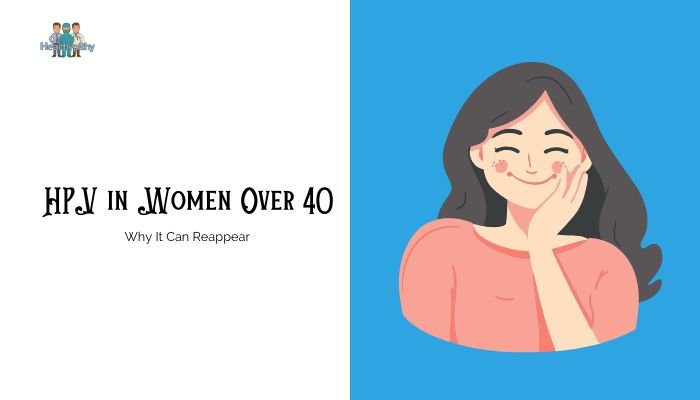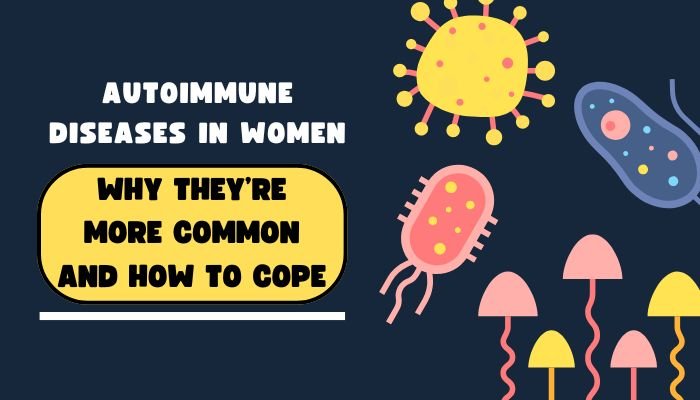Introduction
Most sexually active individuals will contract human papillomavirus (HPV) at some point. Many successfully clear the infection with no lasting issues. Yet, for women over 40, HPV can sometimes reappear—even if a previous test was negative or your body seemingly cleared it years ago.
Whether this indicates a new infection or a dormant virus reactivating, the key is understanding how HPV works, recognizing possible risk factors in midlife, and maintaining consistent screenings to stay on top of cervical health. This article explores why HPV may resurface for women in their 40s and beyond, and how you can address or prevent complications linked to this persistent virus.
Understanding HPV and Its Latent Nature
How HPV Infects
HPV typically spreads through intimate skin-to-skin contact, infecting cells in the cervical lining (or other tissues) and replicating. High-risk HPV strains (like HPV 16 and 18) drive most cervical cancers if the infection remains uncontrolled. Low-risk strains may cause benign genital warts or remain asymptomatic.
Dormancy vs. Clearance
After initial infection, the immune system often suppresses or eliminates HPV, sometimes rendering it undetectable on tests. However, the virus may remain latent—meaning it’s not actively replicating but not fully eradicated. Under certain conditions—like immune changes, stress, or hormonal fluctuations—the virus may reactivate and become detectable again.
Why HPV Can Reappear After 40
Immune System Shifts
As we age, the immune response to viral infections can diminish. Any compromise—be it due to chronic stress, autoimmune conditions, or general aging—may allow a previously dormant HPV infection to replicate again.
Hormonal Factors
While HPV is not solely driven by hormone levels, perimenopause and menopause bring changes (e.g., decreased estrogen) that can affect the vaginal and cervical environment. Some experts hypothesize these shifts in local immunity or tissue health can facilitate viral reactivation.
Possible New Exposure
In cases where a woman changes sexual partners later in life, a “new” HPV infection can occur. Even if you’re past childbearing years, protective measures (like condoms) can help lower the chance of re-infection or acquiring new strains.
Increased Detection with Better Testing
Improvements in HPV tests and screening guidelines over the past decade also mean older women are more likely to discover a dormant virus or a new, asymptomatic infection that previously went unnoticed.
Health Implications of Late HPV Reactivation
Cervical Cancer Risk
Persistent high-risk HPV can lead to cervical dysplasia (precancerous lesions). Women over 40 may be less likely to mount a robust immune defense, meaning these lesions could progress if untreated. Consistent screening remains vital.
Other HPV-Related Cancers
HPV can also contribute to anal, oropharyngeal, or vulvar cancers. While these are less common than cervical cancer, awareness helps you notice unusual lumps, persistent sores, or swallowing difficulties that require evaluation.
Emotional and Social Concerns
Receiving an HPV-positive result after years of negative tests can be confusing or distressing. Addressing stigma or relationship tensions (e.g., fear of new or extramarital infection) may require open communication and accurate medical information.
Screening and Prevention for Women Over 40
Pap Smear and HPV Testing
The U.S. Preventive Services Task Force (USPSTF) recommends:
- Women ages 30–65 can opt for a Pap test every 3 years,
- A primary HPV test every 5 years, or
- Co-testing (Pap + HPV) every 5 years.
Adhering to these guidelines ensures earlier detection of viral reactivation or cervical cell changes.
Potential Vaccination
While historically, HPV vaccines targeted younger demographics (adolescents, early 20s), FDA approvals now extend to age 45. Women over 40 might still consider vaccination if they lack prior immunization. Although it won’t eliminate existing infections, it can protect against new strains.
Partner Testing and Communication
If you have a new partner, consistent condom usage can reduce—but not fully eliminate—HPV transmission. Discussing sexual health histories and test results fosters mutual support and risk reduction.
Managing HPV After 40
Monitor and Treat Precancerous Changes
If your screening reveals abnormal cells:
- Colposcopy: Detailed cervical examination to identify suspicious areas.
- Biopsy or LEEP: Removal of abnormal tissue if needed. Early treatment can prevent progression to cancer.
Immune-Boosting Lifestyle
Though no foolproof method exists to “clear” HPV, healthy habits aid immune function:
- Balanced Diet: Emphasize antioxidants, vitamins, and minerals.
- Regular Exercise: Helps maintain body weight and regulate immune response.
- Stress Management: Chronic stress can weaken immune defenses. Techniques like yoga, mindfulness, or therapy are beneficial.
- Adequate Sleep: Prioritizing 7–9 hours a night supports immune cell renewal.
Emotional Well-Being
Learning of an HPV infection can provoke anxiety or misunderstandings about fidelity and risk. Knowledge that HPV can reactivate long after original exposure helps clarify that new partner infection is not always the cause. Counseling, either individually or as a couple, may help navigate these topics.
Conclusion
HPV can indeed resurface in women over 40 due to shifting immunity, hormonal changes, or new sexual exposures. While this revelation can create stress, the good news is that consistent screening, immune-friendly habits, and, if necessary, timely medical interventions keep the risk of serious disease relatively low. Openness with healthcare providers, adherence to recommended cervical screening, and exploring vaccination for further protection form the backbone of HPV management at any age. By understanding how and why HPV might reappear, women over 40 can remain proactive about safeguarding their reproductive and overall health.
References
- American College of Obstetricians and Gynecologists (ACOG). HPV infection and vaccination: guidance for women over 40. 2021.
- Centers for Disease Control and Prevention (CDC). HPV overview and adult vaccination updates. 2022.
- International Papillomavirus Society. HPV reactivation and persistent infections in older women. 2021.
- Castle PE, et al. Risk of reactivation of prior HPV infection and subsequent cervical cancer: a systematic review. Obstet Gynecol. 2020;135(5):1125–1132.
- U.S. Preventive Services Task Force (USPSTF). Guidelines for cervical cancer screening. 2018.







